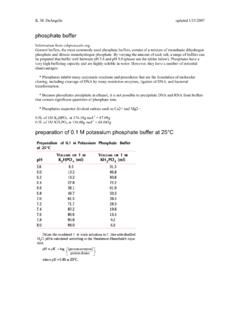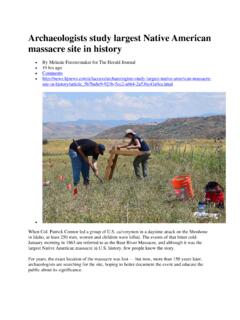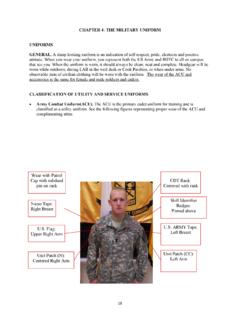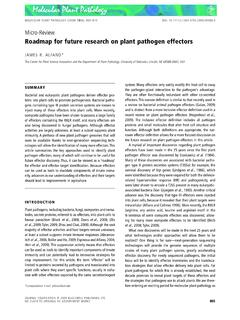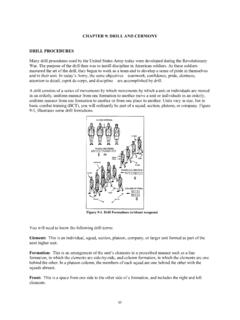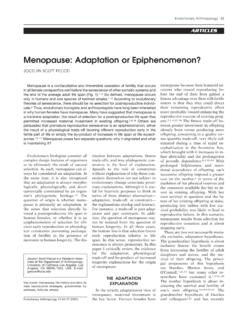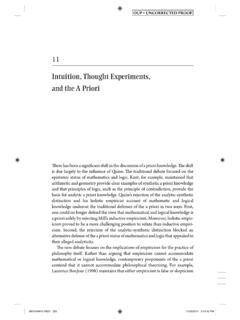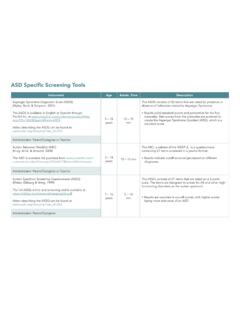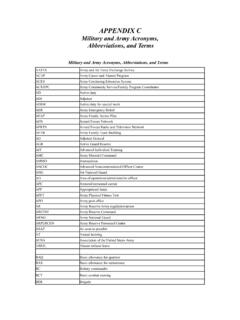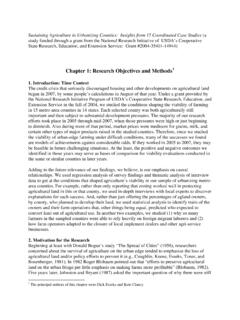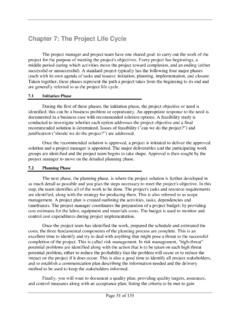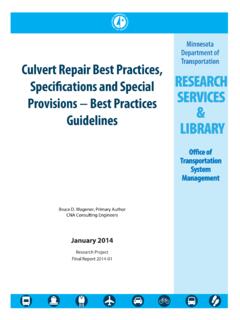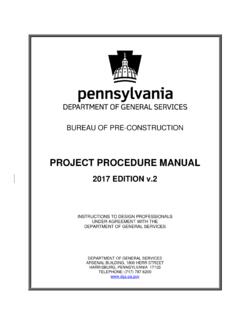Transcription of JGEN 300-001 Fall 2007 Office Office Hours: Office Phone E ...
1 Here's an excerpt of a detailed course syllabus (the original syllabus includes course handouts, guideline sheets detailing expectations for each assignment, and team/ individual evaluation sheets). Although this syllabus is for a particular course, it can be adapted to for use in most courses. We've included a section-by-section explanation Provide basic contact Course Syllabus information so students JGEN 300-001 can communicate with Fall 2007 you as easy as possible. Students Instructor: John Doe appreciate easy access. Note that the instructor also lists Office : 25 FIC additional materials that Office Hours: Tuesdays & Thursdays 12:30 1:30 (or by appointment) students may need to be successful in this Office Phone : 472-6031 (leave a message after three rings; speak loud and course.)
2 Students need clear) to know up front what materials they need. E-mail: Class Hours Include the course Tuesday 8:00-9:30 number and title. If you're teaching the Textbook same course for Lay, , Wahlstrom, , et .al., 1995. Technical Communication. several semesters, it's Chicago: Richard D. Irwin, Inc. useful to include the date to distinguish it from one semester to Additional Materials the next. Loose leaf notebook for handouts, and Requirements supplemental materials E-mail account Note that this syllabus Photocopies as required for in-class work reflects the instructor's Plastic cover/spine for final feasibility study (1 per group) philosophy of teaching. You may have very Course Information different ideas about This course in technical communication emphasizes the principles and course structure and strategies of good technical communication, both written and oral, and gives policies.
3 You practice in applying them to present technical and scientific material informatively and clearly. It is specifically designed to allow students from This is a good overview different majors to interact and communicate with each other and with of the course--what it is various other audiences about subjects their disciplines may have in and what students will common. The course involves applied, activity-based collaboration and be doing in the course. therefore relies heavily on a team approach to learning You'll note that throughout this syllabus Course Objectives there is important Briefly, the course's objectives are to help you: course information 1. Understand the importance of technical communication in your career that students probably 2.
4 Develop basic skills and strategies important in technical won't read the first day. communication (audience and purpose analysis, organization, style, But they'll have it to document design, graphics development, editing, and proofreading) read later or to use as a 3. Analyze and evaluate technical and scientific material reference. It's always 4. Synthesize information in technical communication good to go back to the 5. Prepare professional technical documents, in both electronic and print syllabus during the format third and fourth week to 6. Integrate information from diverse fields and understand how your gently remind students own specialization fits in a broader context of course requirements 7. Collaborate with students from different fields to communicate about and/or their topics relevant to several professions.
5 Responsibilities. Instructional Methods Here the instructor One of the major benefits of a communication course is the opportunity to discusses his work with other people both those who are like you and those who aren't. instructional methods. During this semester, you'll work with three or four other students to complete Note again, how his a major collaborative communication project. This course will challenge you philosophy of teaching to find ways of working productively with people from other disciplines and to is embedded in this discover how to deal with both the drawbacks and rewards of writing in a paragraph. multi-disciplinary context. Most classes will follow a workshop/discussion format. You should be prepared to meet with your collaborative group outside Talks about student of regular class hours.
6 We may spend some time discussing topics and theories that relate to your work in progress, but the amount and nature of that discussion will depend More value/belief on what you need to know to complete assigned work. Part of your statements about the responsibility in this course is to identify topics you want me to explain and purpose of the course. discuss. Collaboration In the workplace, employees within and between departments and divisions frequently work together on projects. Under the leadership of a project supervisor, members of a team may engage in various kinds of work: gather and evaluate information; design prototypes; test and evaluate products, policies, and procedures; and investigate problems and solutions. They keep careful records of their activities, assign team members specific tasks, and in the end, produce a report, article, or manual.
7 The resulting document represents the collaborative efforts of all project team members. Its quality reflects not only the competence of the individuals involved, but their combined ability to manage a project, set and meet deadlines, and carry a document through all essential stages of the writing process. The instructor explicitly explains the purpose of Purpose the course project. This project will give you experience working as a member of a team to Notice how some of the identify an issue or problem (related to the overall theme I identify) that is objectives are written. common to professionals in the fields represented on your team; to reach Students who read this consensus about the objectives of your research and the purpose of your paragraph won't have study ; to develop a project plan that will actively and equally involve all team to guess what they're members; and to ultimately produce a report that accurately reflects the supposed to learn from views of the team and achieves the objectives identified at the project's this project.
8 Outset. In addition, you'll gain experience in project planning, time management, group dynamics, problem solving, and decision-making. Ground Rules The instructor sets the Successful collaboration requires considerable cooperation as well as stage for this course by respect for the differences among team members. Team members must establishing ground listen well, be sensitive to others, and offer encouragement and constructive rules up front. suggestions for improvement. Above all, collaborators must learn to negotiate Depending on the and compromise in the best interests of the group and the achievement of course you're teaching, the team's goal. You must agree to cooperate with each other and should you may expand this assign responsibilities at the outset.
9 If a team member isn't fulfilling his or her section to include rules responsibilities, work as a group to encourage that person to participate. If like turn your cell you don't succeed, one option is to make an appointment for the team to ask phones off or if you me to mediate. bring food or beverages into class, make sure Assignments and Assessment you take the containers Within the parameters of the collaborative project, you'll complete some out when you leave. If independent work as well as work that results from a team effort. The group you're teaching a lab will produce two major reports: one written, the other oral. The other written section you might need reports you'll produce are listed on pages 11 and 12 of this packet. In to spell out the safety addition, you'll participate in group conferences, peer reviews, and oral rules as well.
10 Briefings. There's no final exam for this course. Two quizzes are scheduled. This paragraph outlines Review Draft some of the For two documents (Proposal and feasibility Report), you'll prepare at least assignments involved one draft, which another writer (or writing team) will review according to in this course. It might criteria we'll establish beforehand. read easier if these assignments were Description. The review draft is an early version of a document that you listed and bulleted. revise and reorganize in order to produce a polished, professional communication. It differs from the rough draft in that it's intended for readers other than the author and it resembles the finished product closely enough This section outlines that another person can respond to it usefully.
